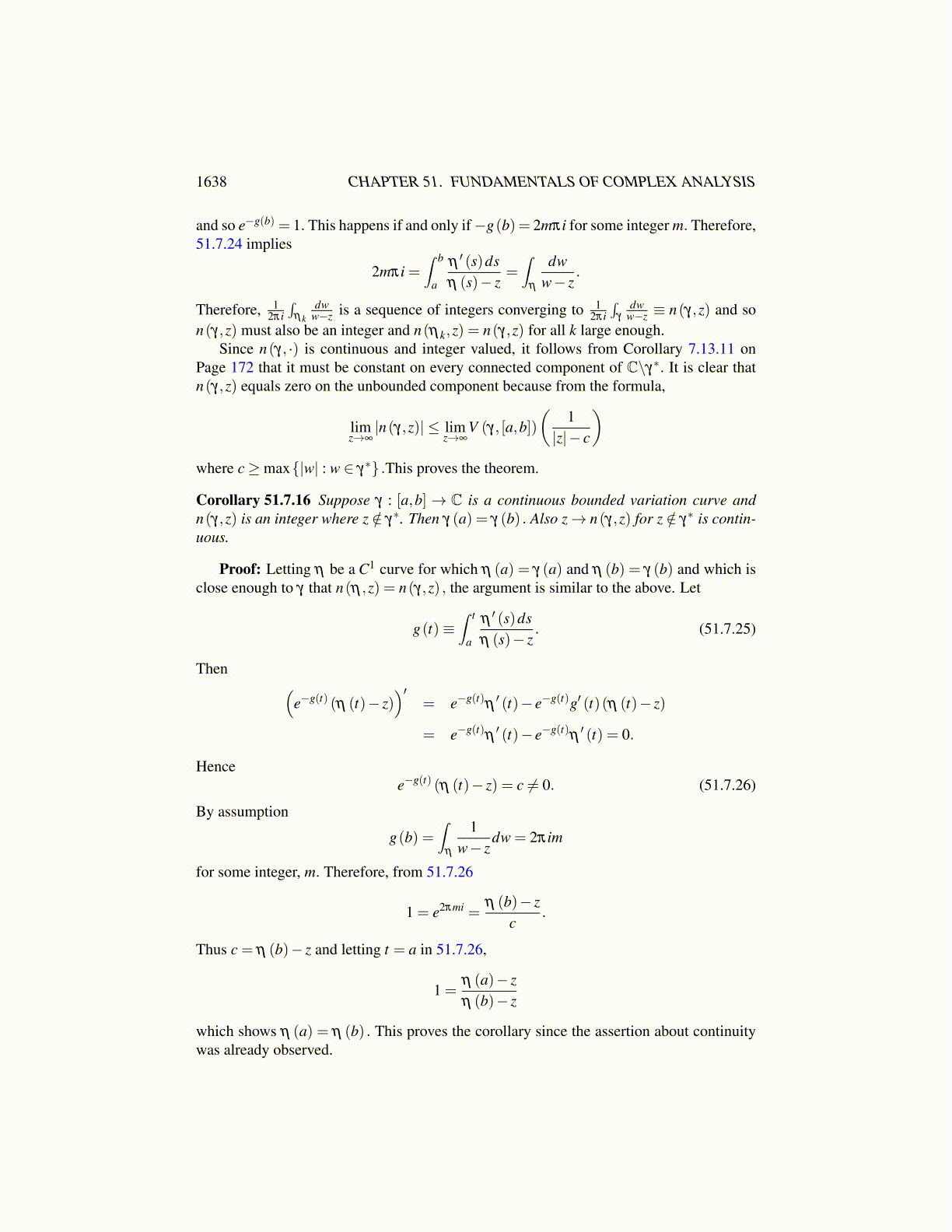
1638 CHAPTER 51. FUNDAMENTALS OF COMPLEX ANALYSIS
Now
limz→a
(|g(z)| |z−a|M +
M−1
∑k=1|bk| |z−a|M−k
)= 0
and so the above inequality proves limz→a | f (z)| = ∞. Referring to the diagram on Page1599, you see this is the same as saying
limz→a|θ f (z)− (0,0,2)|= lim
z→a|θ f (z)−θ (∞)|= lim
z→ad ( f (z) ,∞) = 0
Conversely, suppose limz→a d ( f (z) ,∞) = 0. Then from the diagram on Page 1599, itfollows limz→a | f (z)| = ∞ and in particular, a cannot be either removable or an essentialsingularity by the Casorati Weierstrass theorem, Theorem 51.7.9. The only case remainingis that a is a pole. This proves the theorem.
Definition 51.7.12 Let f : Ω→ C where Ω is an open subset of C. Then f is called mero-morphic if all singularities are isolated and are either poles or removable and this set ofsingularities has no limit point. It is convenient to regard meromorphic functions as havingvalues in Ĉ where if a is a pole, f (a) ≡ ∞. From now on, this will be assumed when ameromorphic function is being considered.
The usefulness of the above convention about f (a) ≡ ∞ at a pole is made clear in thefollowing theorem.
Theorem 51.7.13 Let Ω be an open subset of C and let f : Ω→ Ĉ be meromorphic. Thenf is continuous with respect to the metric, d on Ĉ.
Proof: Let zn → z where z ∈ Ω. Then if z is a pole, it follows from Theorem 51.7.11that
d ( f (zn) ,∞)≡ d ( f (zn) , f (z))→ 0.
If z is not a pole, then f (zn)→ f (z) in C which implies
|θ ( f (zn))−θ ( f (z))|= d ( f (zn) , f (z))→ 0.
Recall that θ is continuous on C.
51.7.4 The Cauchy Integral FormulaThis section presents the general version of the Cauchy integral formula valid for arbitraryclosed rectifiable curves. The key idea in this development is the notion of the windingnumber. This is the number also called the index, defined in the following theorem. Thiswinding number, along with the earlier results, especially Liouville’s theorem, yields anextremely general Cauchy integral formula.
Definition 51.7.14 Let γ : [a,b]→ C and suppose z /∈ γ∗. The winding number, n(γ,z) isdefined by
n(γ,z)≡ 12πi
∫γ
dww− z
.
The main interest is in the case where γ is closed curve. However, the same notation willbe used for any such curve.